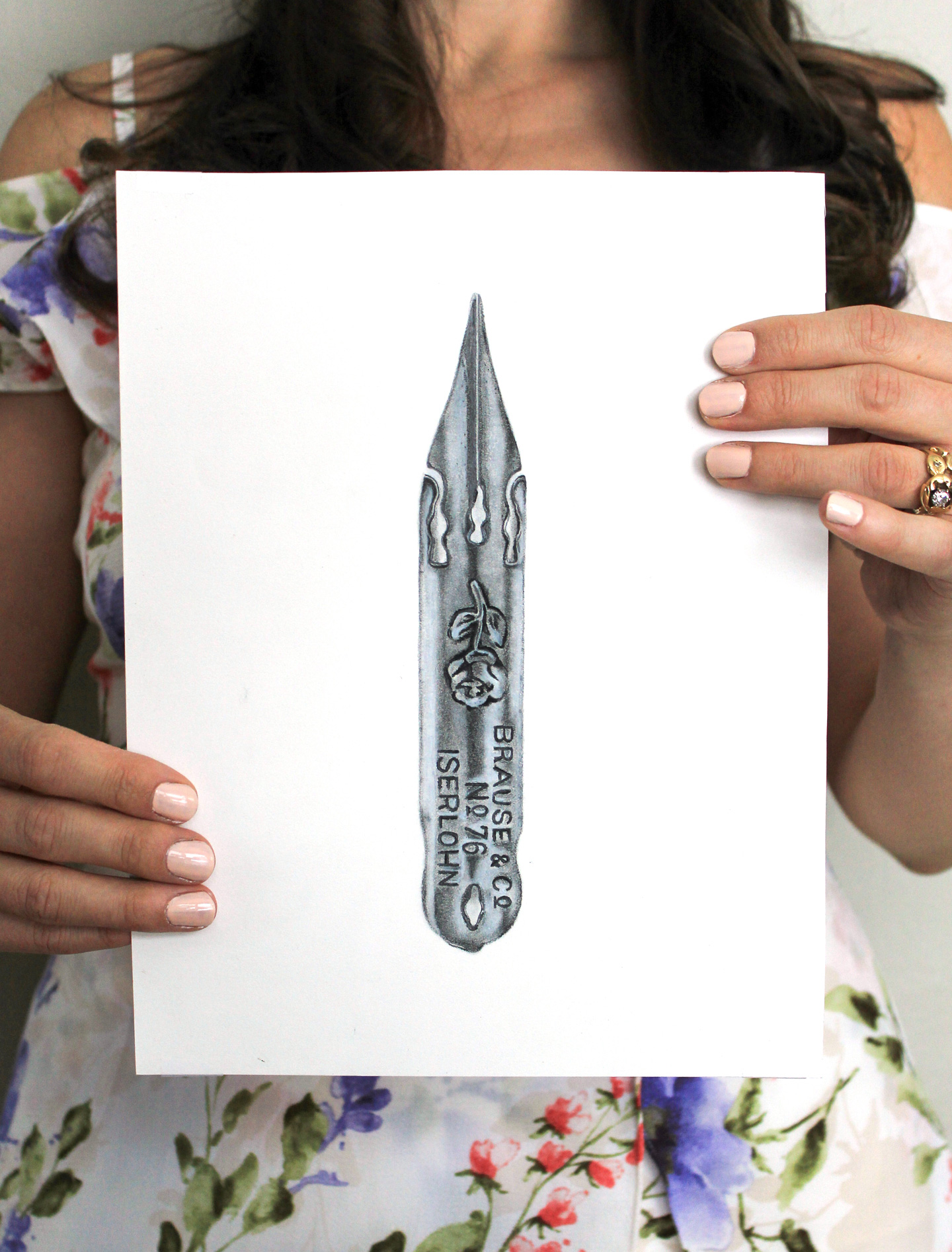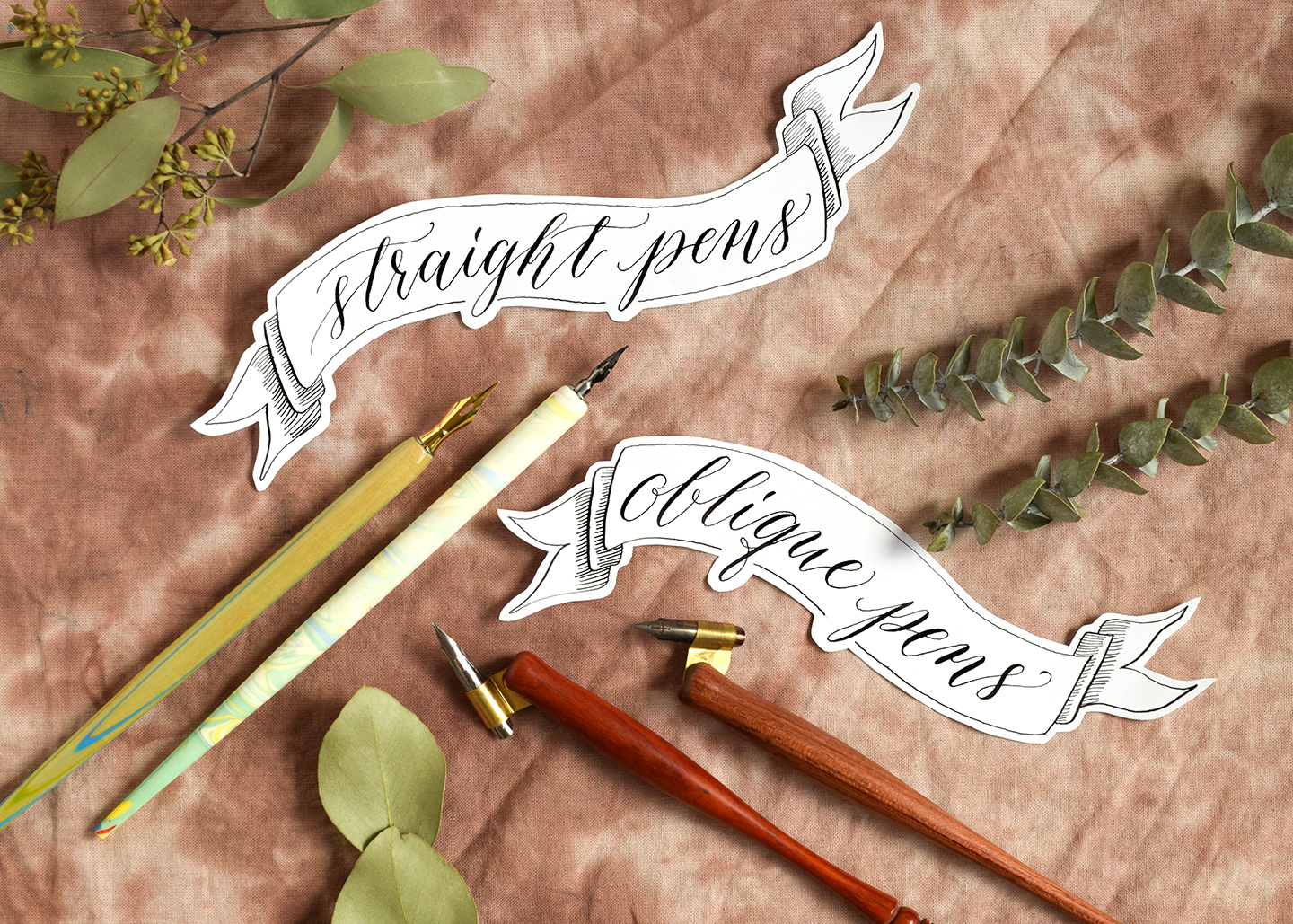
In Which Calligraphy Writing Utensil is Best for You?: Part I, we talked about using regular pens and brush pens to create calligraphy. Both of those writing utensils provide a non-intimidating, fun entry into the world of lettering! Once you’ve practiced with regular pens and/or brush pens for a few days, though, you will probably want something a little more advanced. Enter dip pen calligraphy! In this post, we are going to discuss straight pens and oblique pens: how you know you’re ready to try them, which ones to purchase, and tips for using them.
Straight Dip Pens
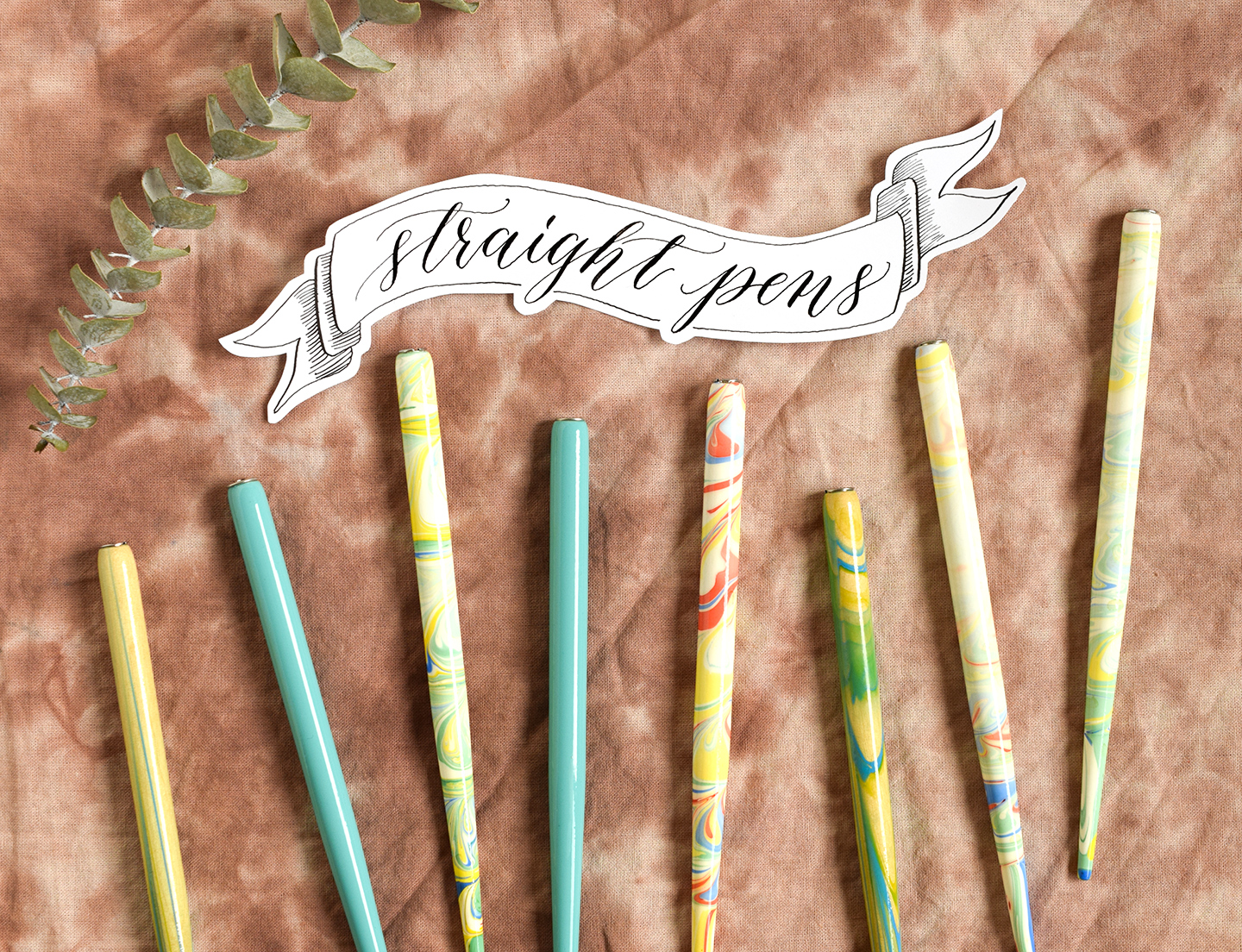
I recommend that learners try out straight pens once they have mastered faux calligraphy — which really only takes a couple of days! That’s why every Learn Calligraphy for a Latté set introduces you to the lettering style with faux calligraphy, then eases you in to using a dip pen later in the worksheet. When you use a straight dip pen for the first time, it’s a whole new experience that is fun and perplexing all at once! It’s awesome to try out a new writing utensil, but, at the same time, using a dip pen is so different from using a regular pen that you are bound to experience a couple of hiccups as you are learning. The best way to keep going is to set yourself up for success! First, make sure you start off with the right nib — it is my belief that the best beginner nib is the Nikko G.
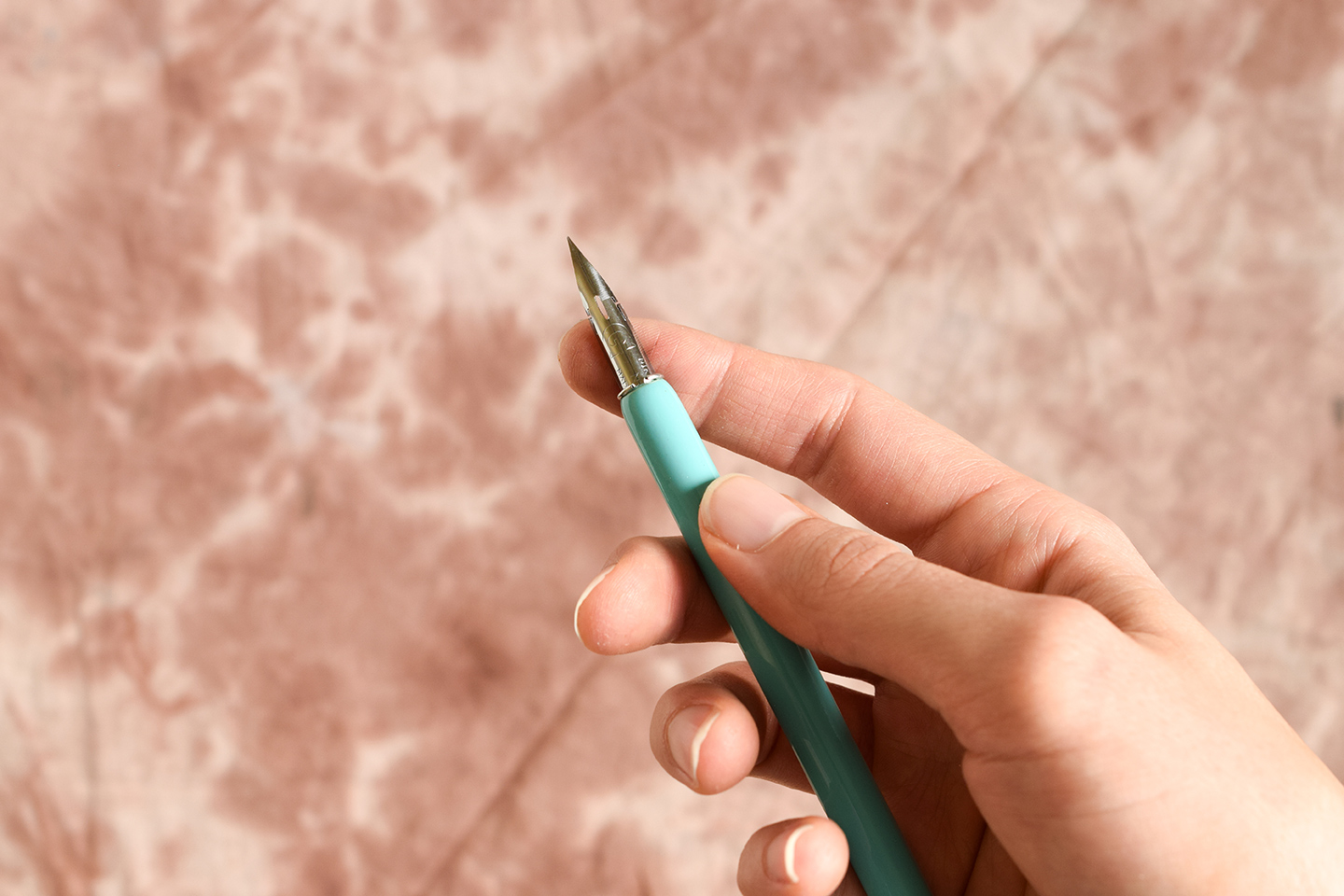
The Nikko G is a Japanese nib that was originally developed for manga artists. However, much to the manufacturer’s delight, I’m sure, it has also proven itself to be a popular nib among calligraphers everywhere. There’s a reason for that: it is strong enough to ride out your growing pains as you’re figuring out how to control the pressure you put on your pen. More flexible nibs aren’t as accommodating!
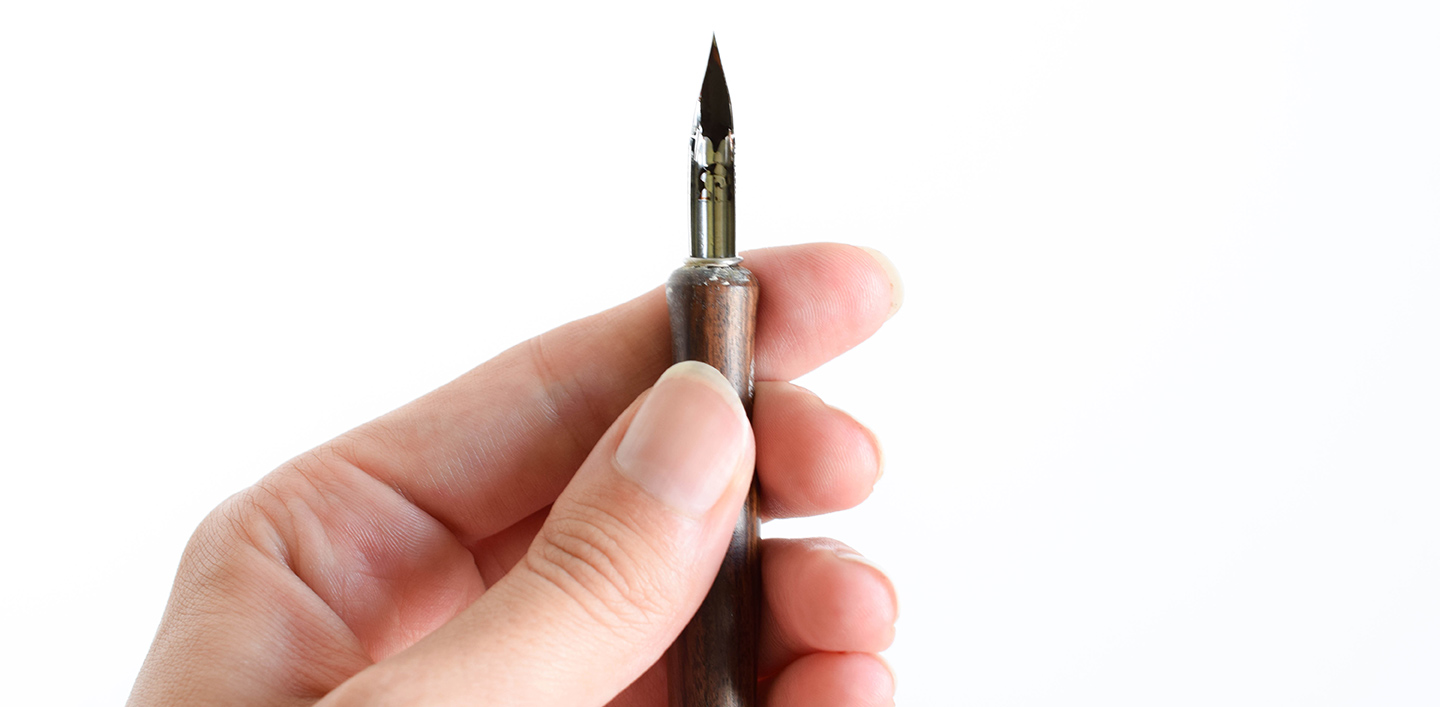
I know it’s tempting to purchase a kit that includes several nibs at large craft stores, but you’ll be doing yourself a big favor if you start off with the Nikko G. Pre-assembled calligraphy kits typically include nibs that aren’t beginner-friendly, unfortunately. You may find yourself getting frustrated trying to use the nibs! Luckily, the Nikko G nib can be found just about anywhere including the US, the UK, Canada, Malaysia, the Philippines, and Australia.
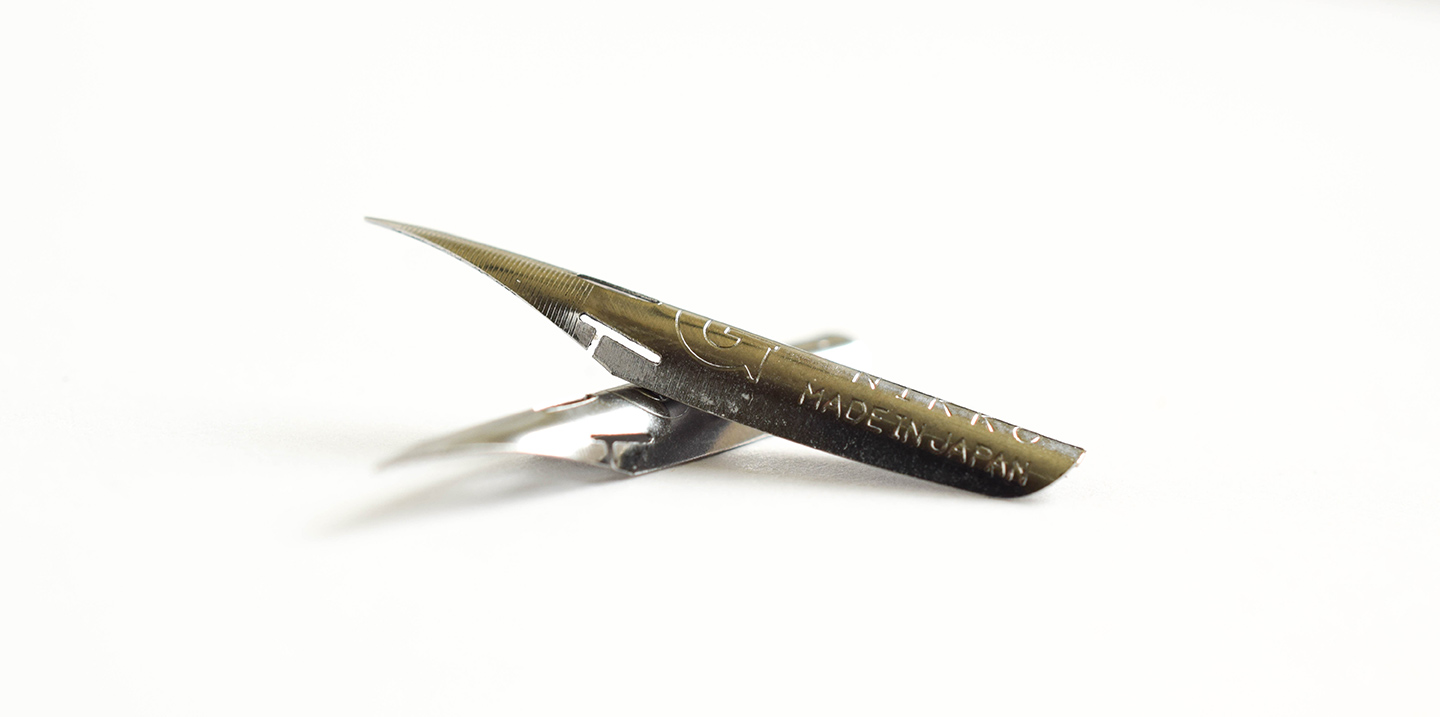
Another thing you should do to ensure a smoother transition into dip pen calligraphy is wash your nib when you receive it! Nib manufacturers put oils on their nibs to preserve the product. However, oil and liquid (i.e. ink) don’t mix well, and if there is residual oil on your nib, you will have maddening issues with ink flow. To wash a nib, gently scrub it with a soft toothbrush and dish detergent (a de-greasing detergent is ideal), then dry it off.
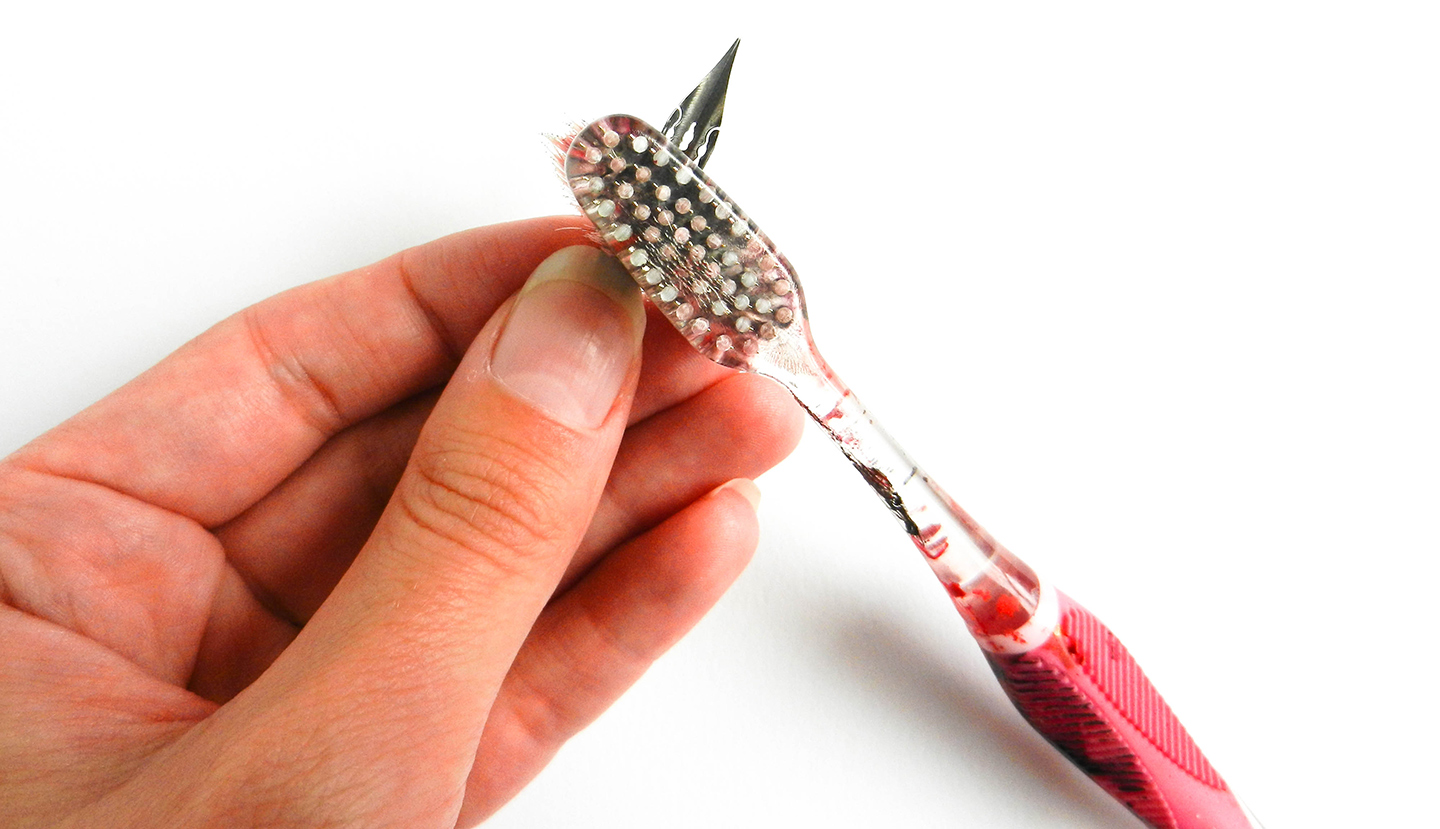
Thus far we’ve talked a lot about nibs, and you’re probably wondering about the pens themselves. To be honest, you can use just about any straight pen that appeals to you! I would recommend a pen with a universal insert, though. “Universal insert” refers to the metal petals inside of a pen; they look like the photo below.
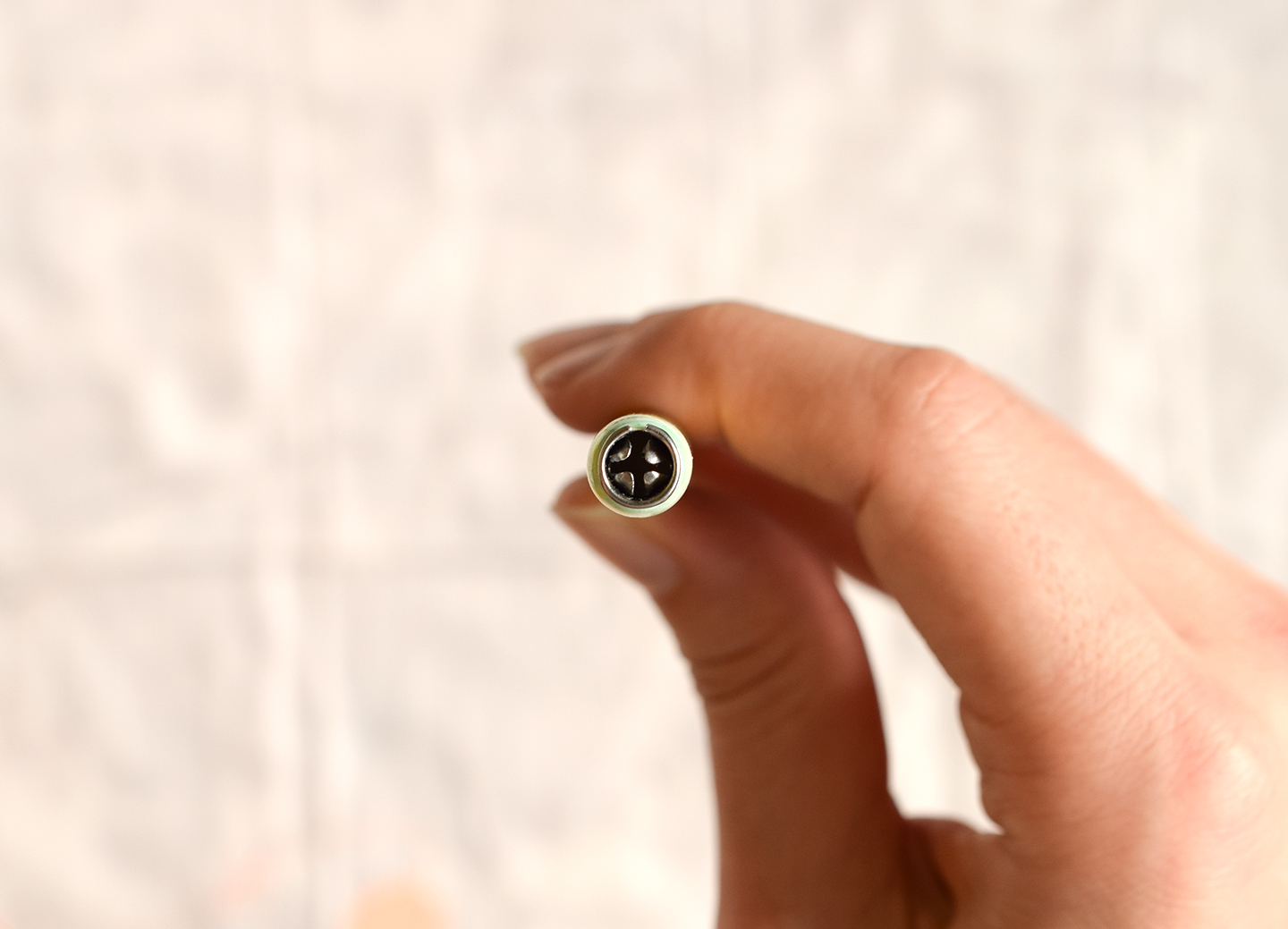
As the name implies, universal inserts can accommodate just about any nib, which is why they are ideal! You’ll just wedge the base of your nib right under the metal split in the rim, which you can see at the top of the insert pictured above. The top, convex surface of the nib, then, will be facing the split in the insert. The bottom, concave surface will be hugging the two “petals” under the split.
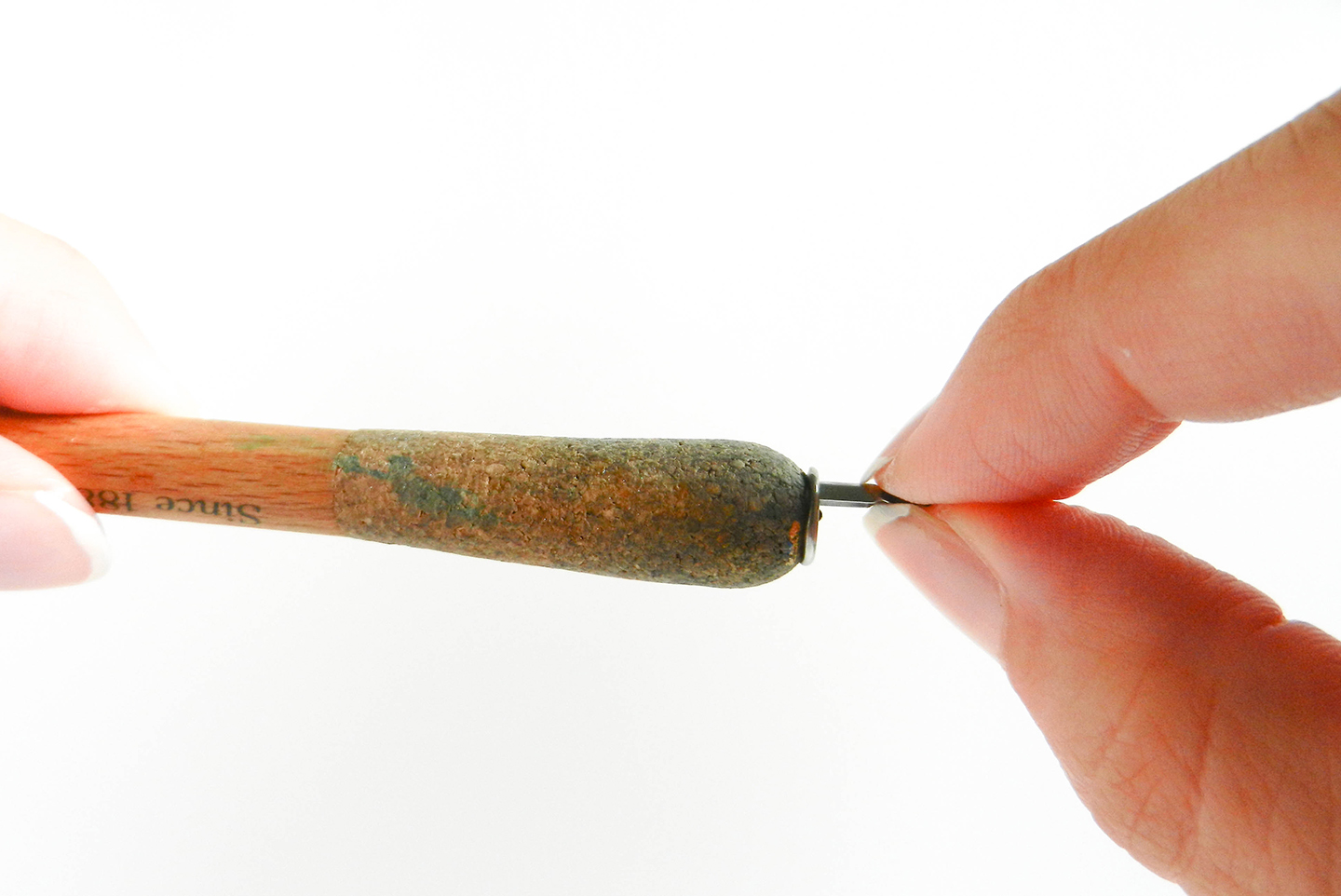
If you are intimidated by the universal insert, you might consider purchasing a Tachikawa T40 holder, which features a cushy grip and a rubber insert. The insert accommodates most nibs beautifully, including the Nikko G and my personal favorite, the Brause EF66. The pen also comes with a handy cap to protect your nib, which makes it perfect for traveling!
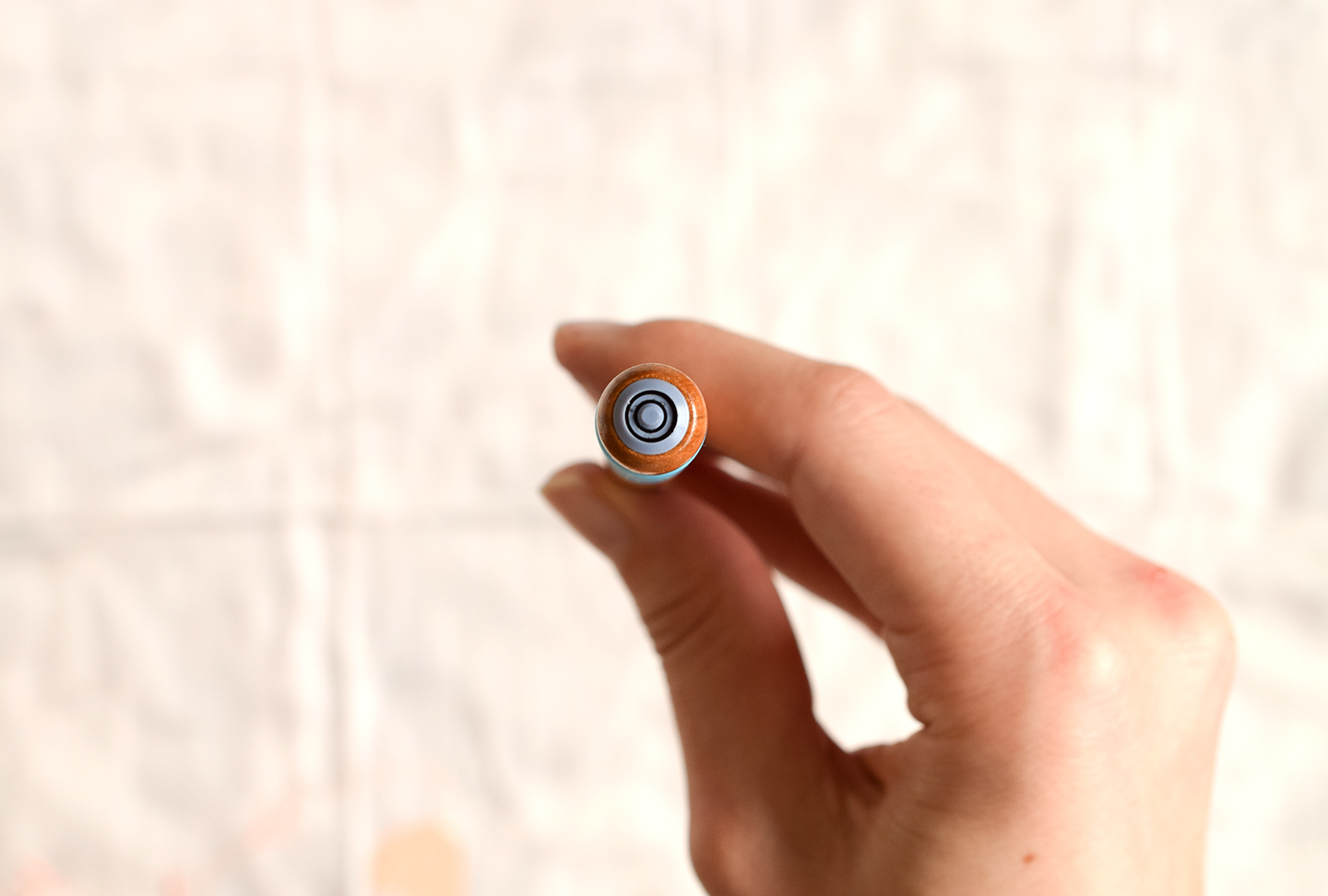
Finally, you have probably seen standard plastic Speedball pens. The idea is to just stick the base of your nib into the plastic groove. That works as long as you are using a relatively large nib like the Nikko G, but when you are ready to move on to different sizes of nibs, they may not fit! The Brause EF66, for example, will not work in the pen pictured below.
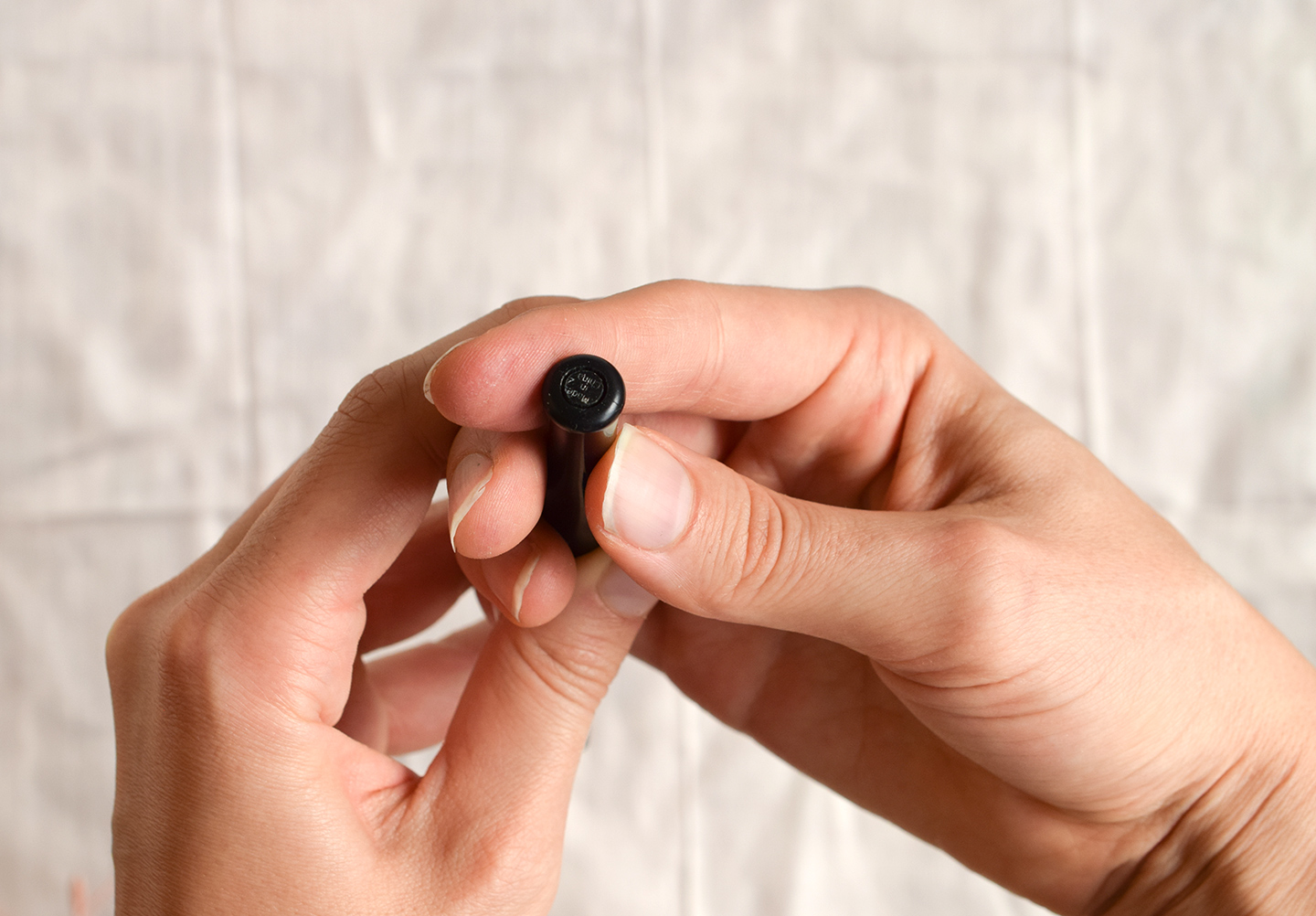
I think that straight holders are a great writing utensil for all calligraphy beginners — left-handed and right-handed — because they are structurally similar to the writing utensils you grew up using: pencils and regular pens. They are good to keep around for any kind of calligraphy or hand-lettering, plus you can use them to draw!
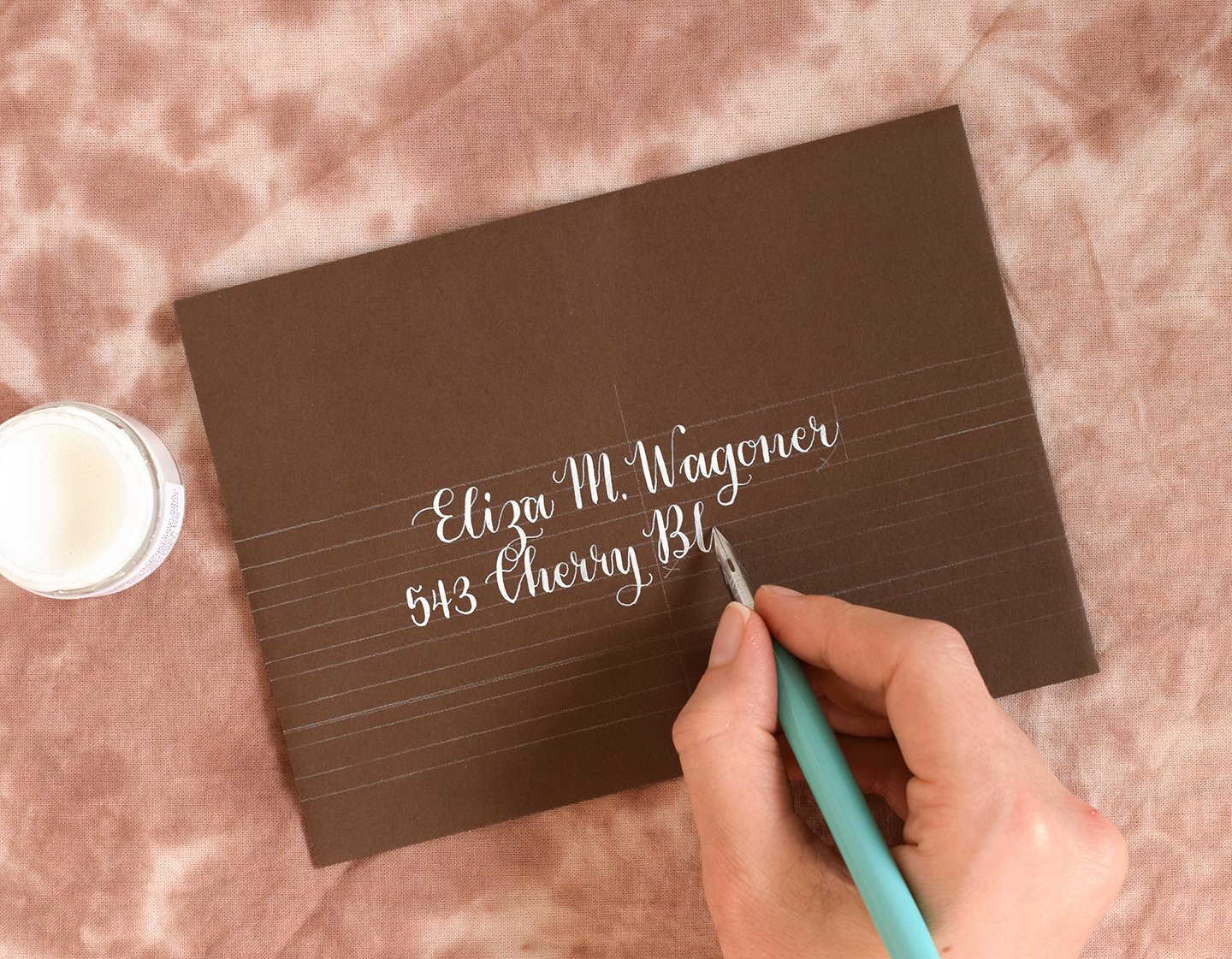
That said, you may find it easier to create right-leaning scripts with an oblique pen; I know I certainly do! For that reason, I generally only use my straight pens to create upright, non-angled calligraphy such as Amy Style (pictured below).

While there are some rare unicorn people who can pick up a dip pen for the first time and write properly with it, for the rest of us, it can be tough! For that reason, I created a little video that will show you the difference between using a regular pen and using a dip pen. You’ll notice a variation in grip and the way that I move the nib. When using a dip pen, your goal is to keep the nib in a stationery position; your grip shouldn’t change at all, and your arm will move your hand. That may not make sense now, but watch the video and it will!
[vimeo 159122457]
I hope that video helps you to achieve the results you want with your straight pen and serves to clarify confusion! Here are a few other tips to keep in mind:
- Try to hold your pen at a 45° angle to the paper. The more vertical/upright you hold your pen, the more chance there is that the nib will catch on the paper.
- If you want some fantastic, cost-effective paper to practice on, try 32# laserjet paper. It’s super-smooth, so it doesn’t allow ink to bleed and will lessen the chances of nibs snagging.
- Both right- and left-handed people can use a straight pen. Just try to keep your hand under — rather than to the left of or to the right of — your calligraphy, as shown in the video!
Oblique Dip Pens
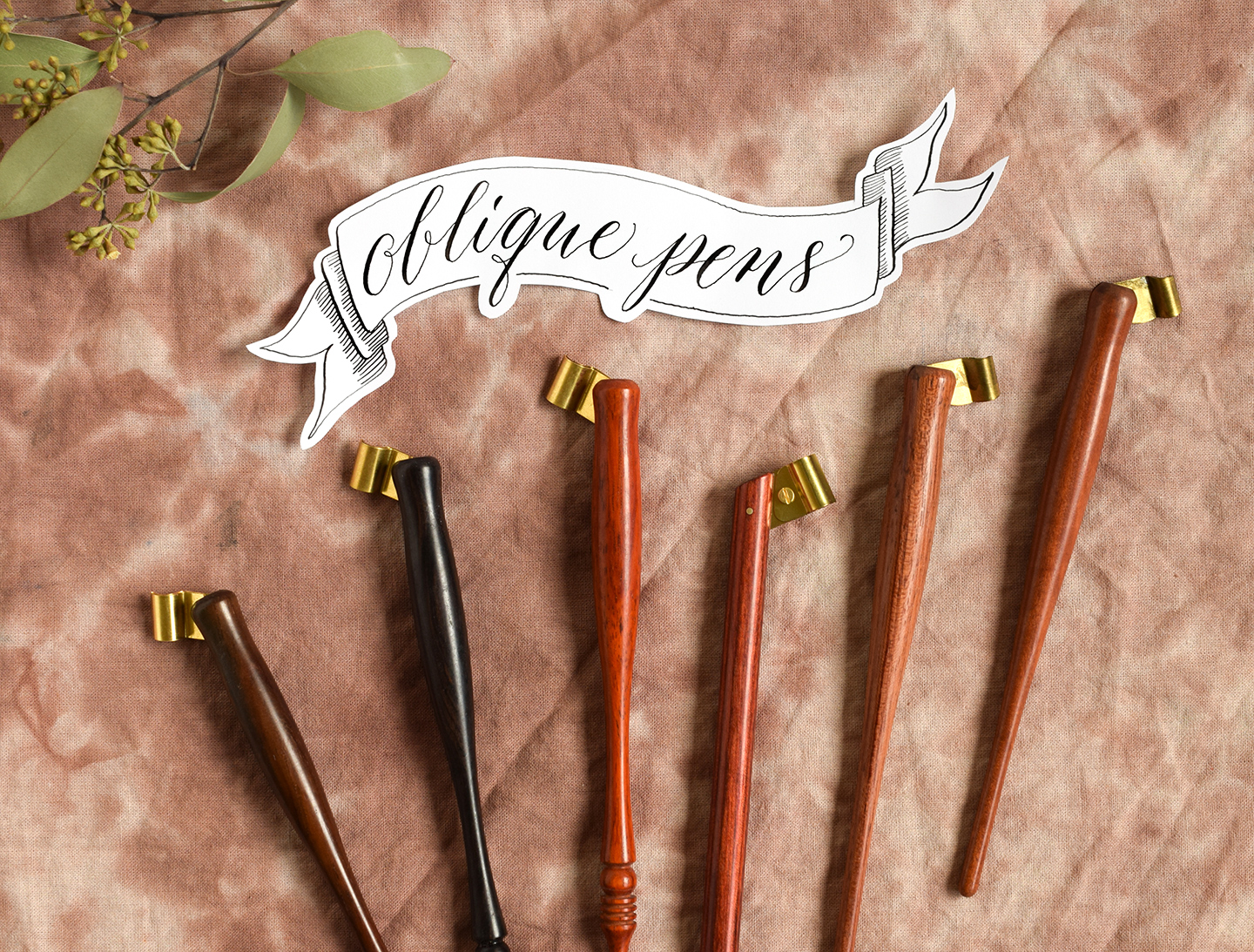
Oblique calligraphy pens were originally developed to give right-handed calligraphers a better angle when writing. Eventually, they became available for left-handed calligraphers as well! I love using an oblique pen because I feel that it makes easier work of writing right-leaning scripts for me as a right-handed person. When you’re a “righty”, your arm/hand/fingers will naturally point toward the left as you write. That can make it hard to achieve a right-leaning slant! If you have been practicing with a straight pen for a while (at least a couple of weeks), and you’d like to a new writing utensil, an oblique calligraphy pen is just the ticket!
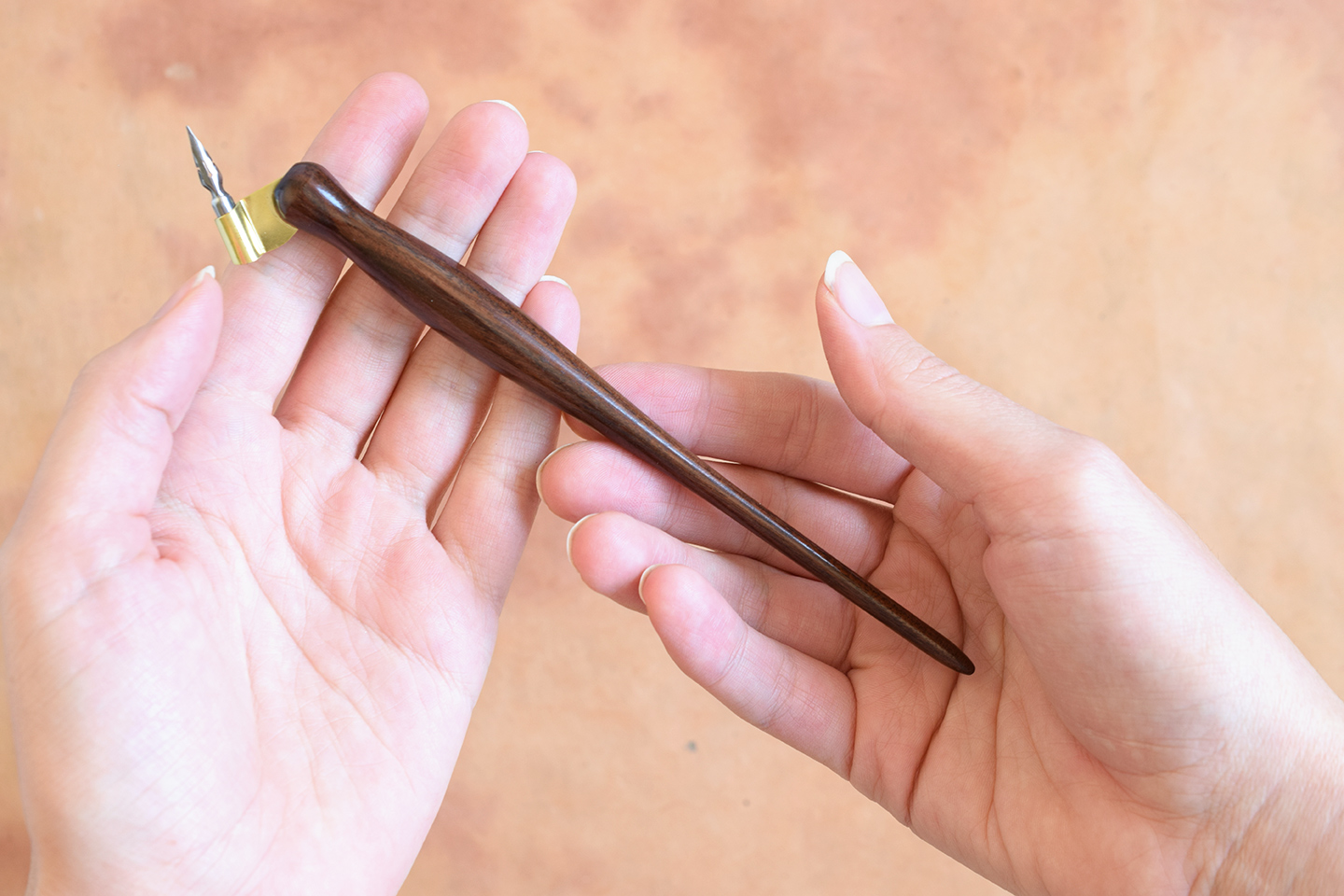
While oblique pens were originally intended to make life easier for writers, they can be difficult to get the hang of. For that reason, I think that it’s best to fully acquaint yourself with using a straight dip pen first. That way, you can work out the kinks as far as figuring out how far to dip nibs in ink, understanding how to exert pressure on nibs, and getting acclimated to writing with dip pens in general.
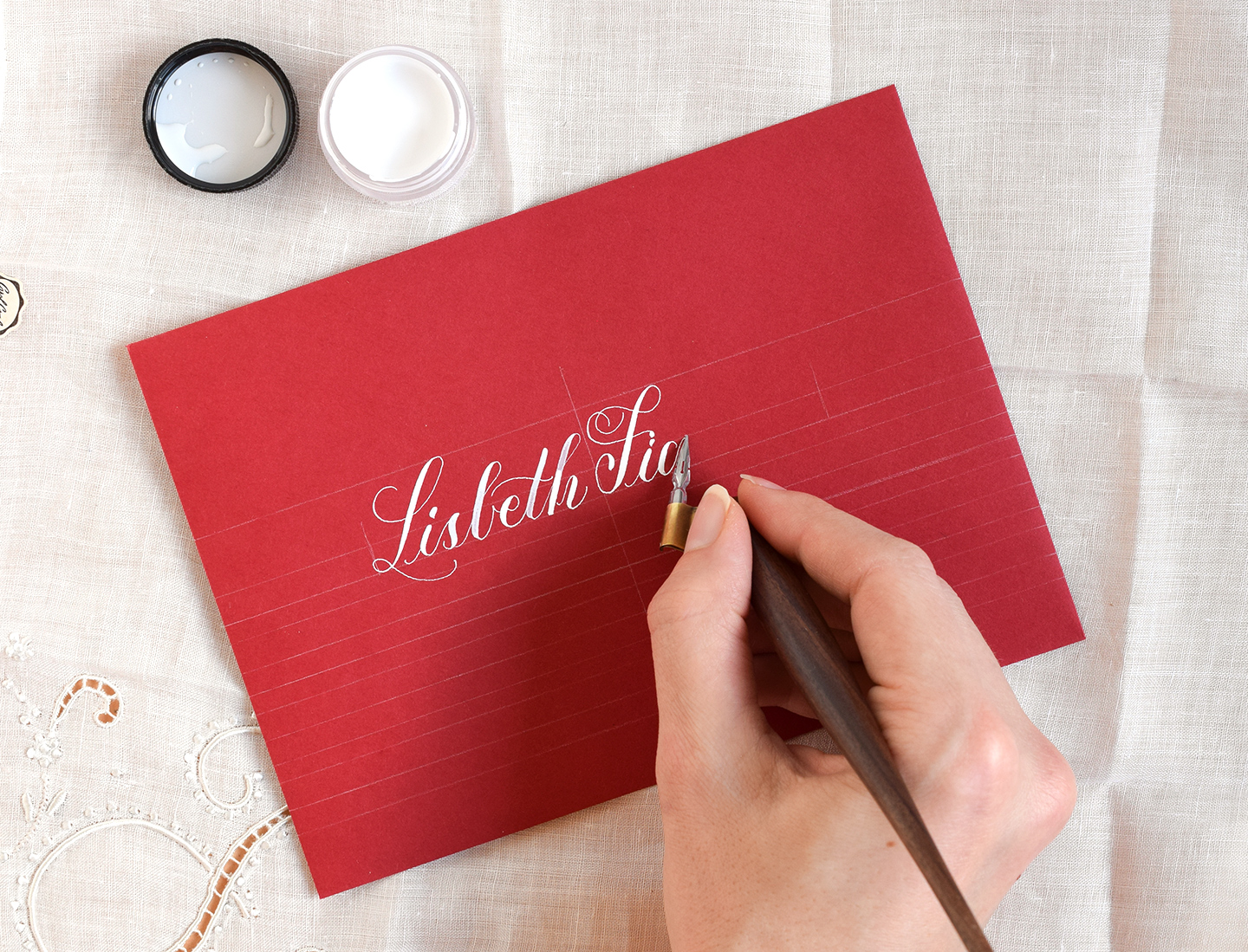
Initially, the most difficult aspect of using an oblique pen is figuring out how to hold it! I, personally, prefer to grip the pen near the bottom and rest the side of my thumb on the brass flange. This gives me even more control over the pressure I can exert on the nib! However, I have noticed that people tend to adjust their grip to suit their inclinations. For example, penmaker Rodger Mayeda pushes down on the top edge of the flange with the tip of his thumb as he is writing. He can get away with that because his nails are shorter than mine!
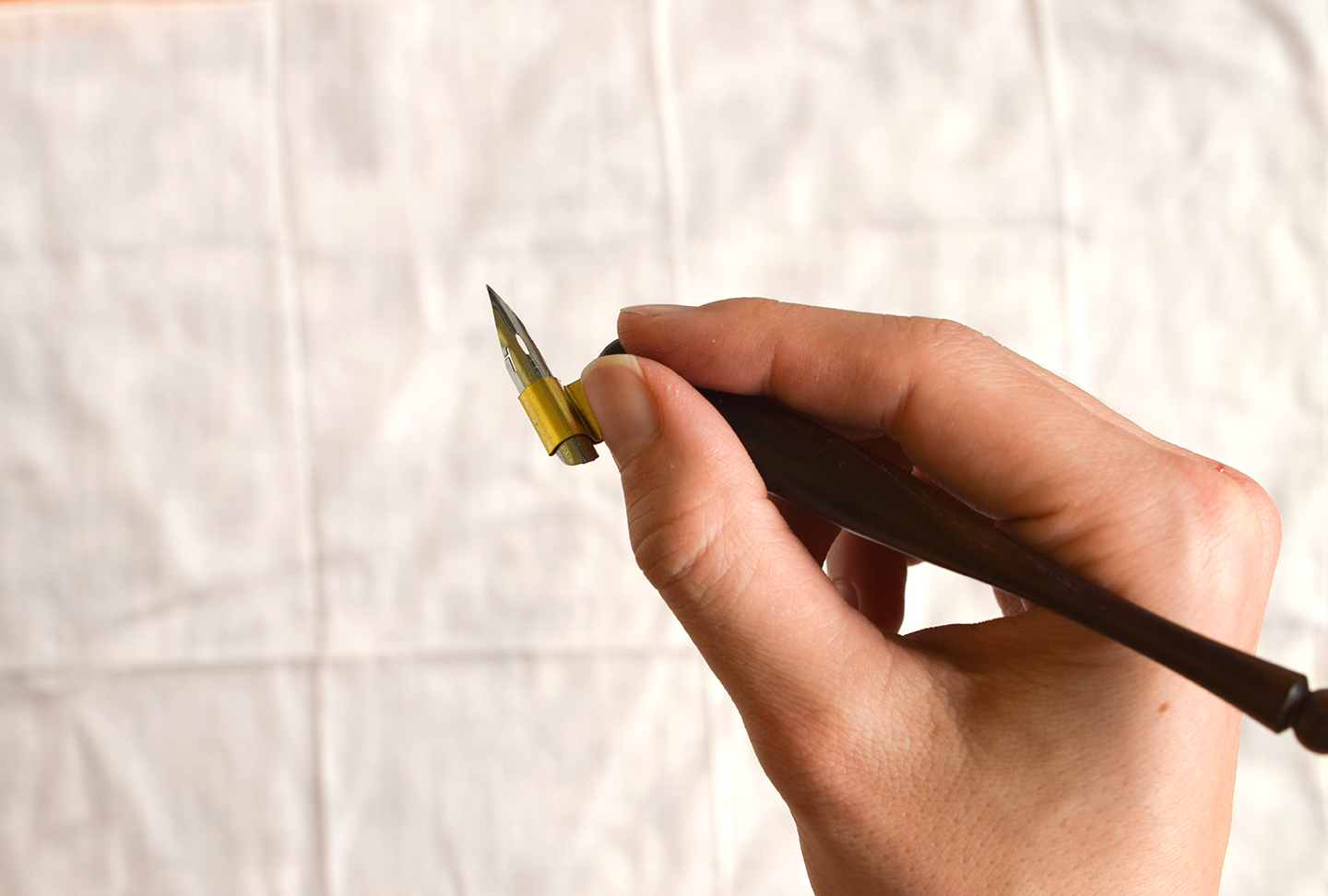
Another question you may have is how far to push the nib into the flange. Your goal is to line up the flange with the center of the pen. So: imagine that there is a straight line running through the middle of the pen’s body, as pictured below. The tip of the nib should touch that line! (On a side note, after making this graphic, I realized my nib needs to be moved down just a tad bit; you can see that the tip isn’t quite touching the line, and it should be.)

While I have always used Rodger’s Pen Box obliques, it is my opinion that you can use any brass-flanged oblique pen with success. I particularly like these turned wood oblique pens, and I am distributing them to learners in my Colorado Springs calligraphy workshop this weekend! If you can, try to avoid plastic-flanged obliques (like this one); these pens force you to write at a somewhat vertical angle, and the position of the flange does not allow the tip of the nib to line up with the center of the pen.
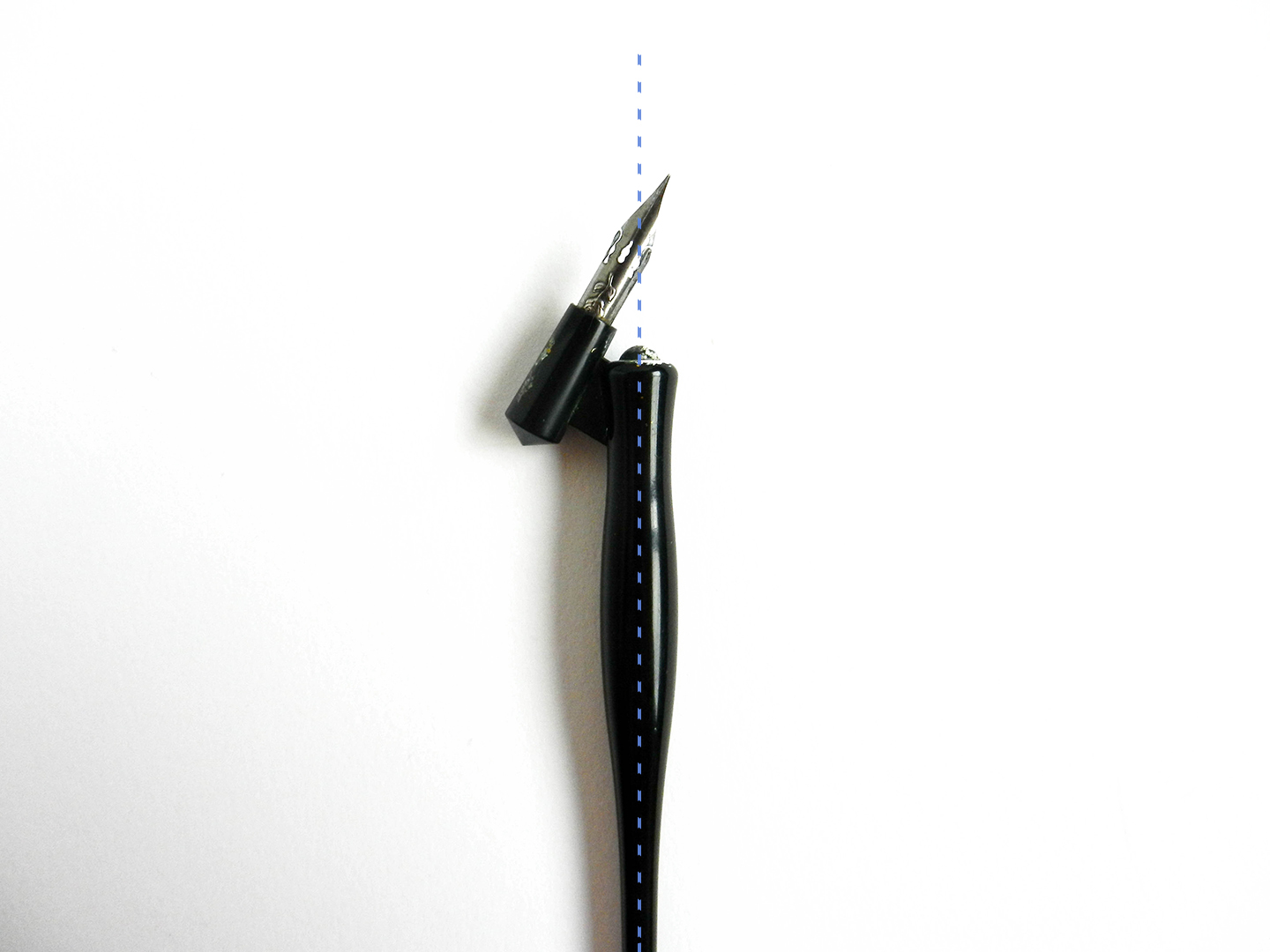
You might wonder whether oblique pens are a writing utensil that can accommodate multiple nibs. The answer is yes and no; you can adjust your oblique pen to fit nibs of similar sizes. However, if you want to modify an oblique holder that was originally created for a large nib (say, a Nikko G) in order to accommodate a small nib (for example, a Brause EF66), you will have a tough road ahead. It’s difficult to radically change the brass flange to do this. You can circumvent that issue by purchasing an oblique with an adjustable flange, but with smaller nibs — like the Brause EF66 — you have to put a lot of the nib’s body in the flange in order to secure its position. That makes it difficult to ensure the tip of the nib lines up with the middle of the pen. Ultimately, my advice is to purchase different oblique pens for different nibs. You’ll only need one to two pens! I, personally, find myself exclusively using my Brause EF66 oblique pen and my Nikko G oblique pen.
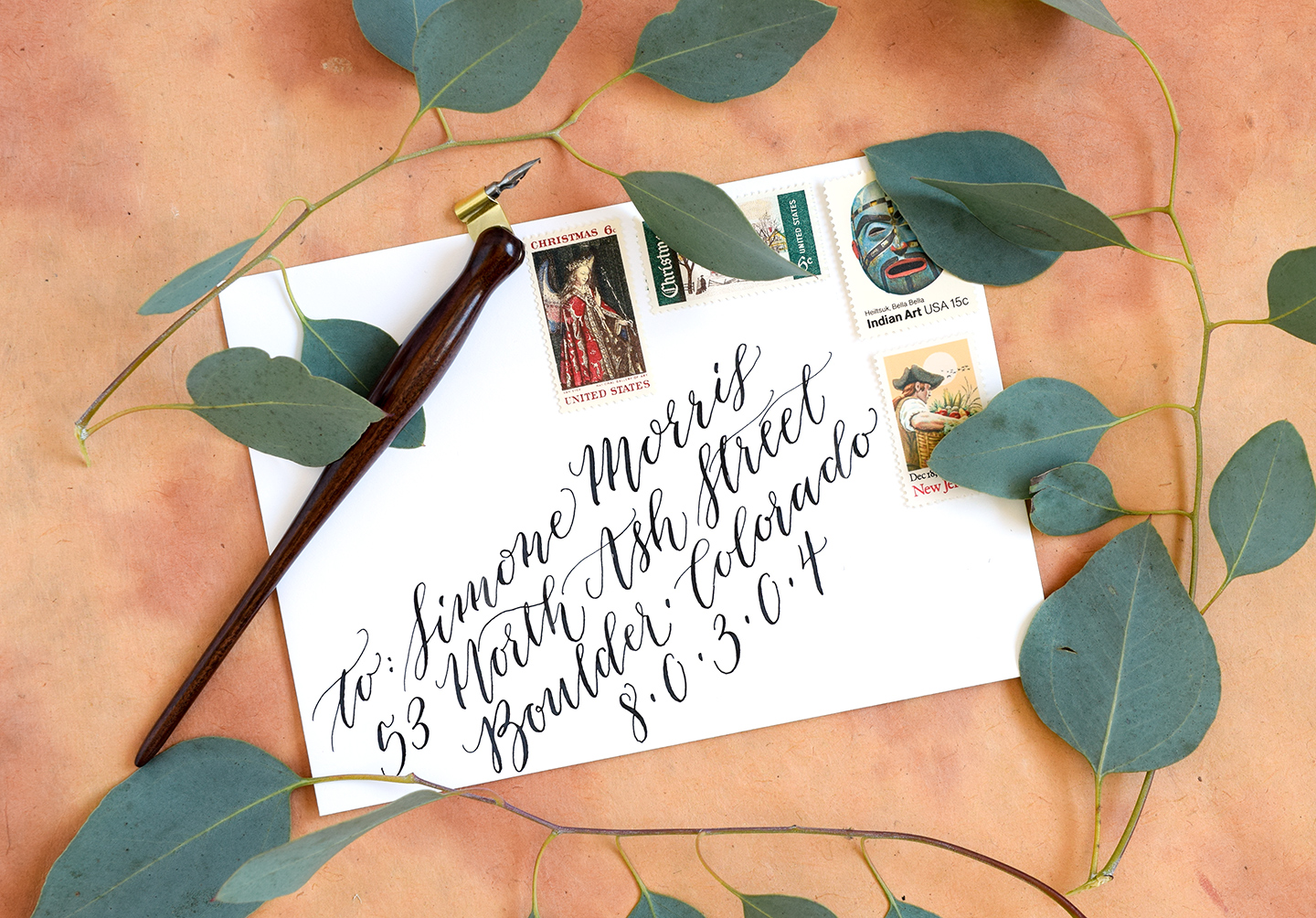
Regardless of which nib (or nibs) you choose to use in your oblique pen, I think that you will find that it makes creating slanted calligraphy — like the Kaitlin Style envelope above and the Janet Style wedding invitations below — much easier. Just be patient with yourself as you’re learning how to use this new type of writing instrument, and be sure not to skip the important things (washing the nibs and practicing on a smooth, quality paper)!
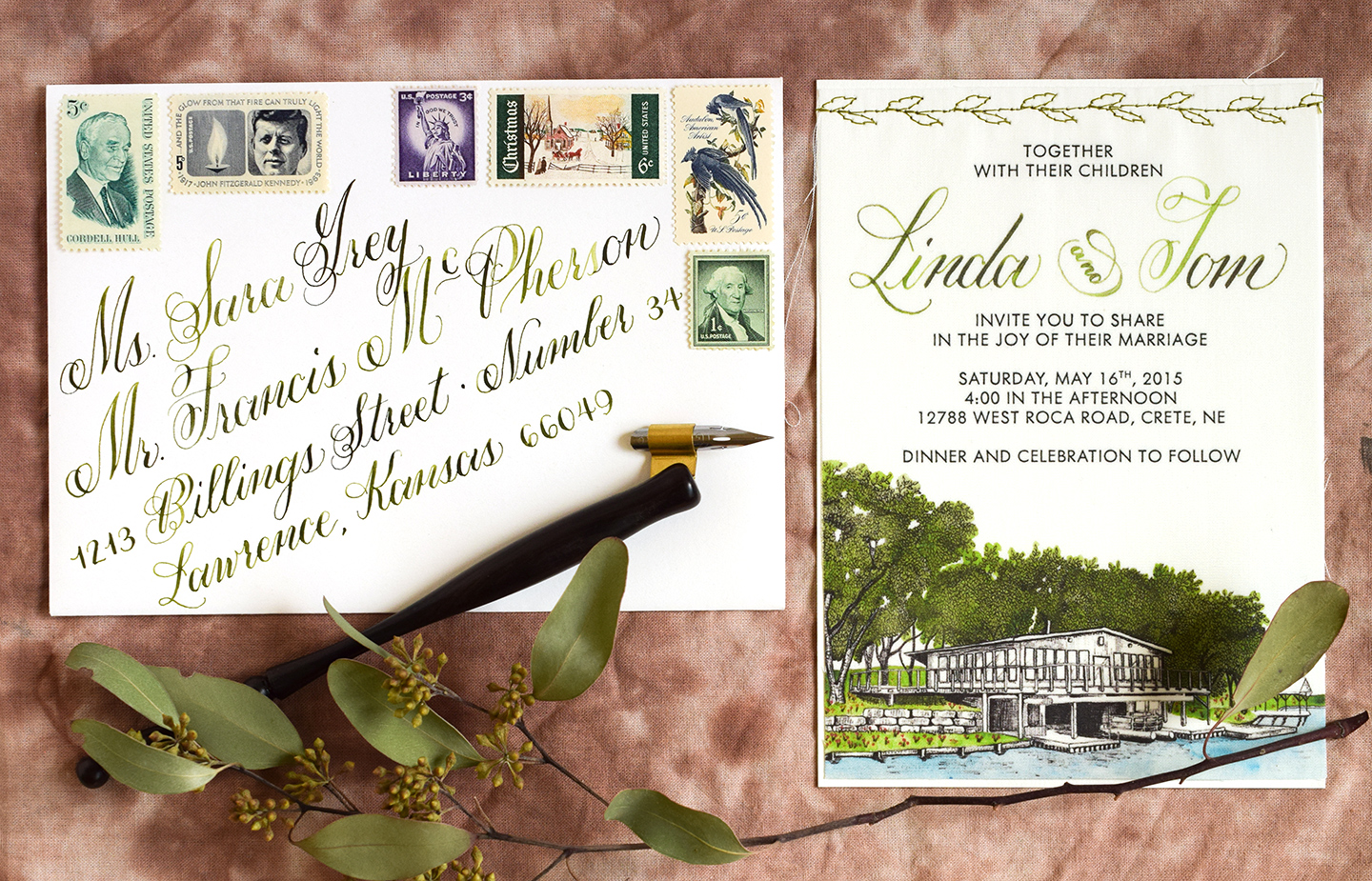
Now, up until this point, I’ve been a little ambiguous about what oblique pens can do for lefties. Some left-handed people swear by them, and others prefer to continue using a straight pen. Whether a left oblique will benefit you or not seems to be dependent on what kind of a leftie you are (e.g. if you write with a hook vs. naturally keeping your hand under whatever you are writing). There are even a few left-handed people who use right oblique pens! Due to my limited knowledge on the subject of lefties and obliques, I want to share a video with you that a left-handed friend recently sent to me; it should be helpful for left-handed learners! You can find it on YouTube by clicking here.
Giveaway

Whether you are a beginner or a seasoned calligrapher, you can never have too many pens! I would love to give you two more: a straight pen (I’m loving the marbled Manuscript pens), and a wooden oblique holder. The pens will be accompanied by a Nikko G nib and a Brause EF66 nib. Three readers will win the giveaway, which of course is open internationally. It’s open to both righties and lefties! If you are a leftie winner, I will make sure to send you a left oblique pen (unless you request otherwise). You can enter using the Rafflecopter widget below. If you don’t have any social media accounts, you can still enter: just use the “Answer a Question” option to submit your name to the giveaway.
a Rafflecopter giveaway
Thanks so much for reading TPK, and best of luck in the giveaway! Oh, and for those of you who are curious about the release date of the Digitizing Artwork and Calligraphy Video Course: it will be out Tuesday, March 22nd. I’m relieved because it has required a lot of work; but I’m also excited because I think it will help a lot of people to put their art and calligraphy on prints, invitations, and websites! You’ll get all the details in Tuesday’s blog post. 🙂
Warmly,
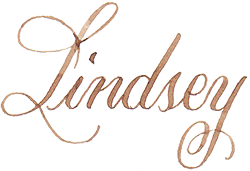
*This post contains affiliate links to Amazon























